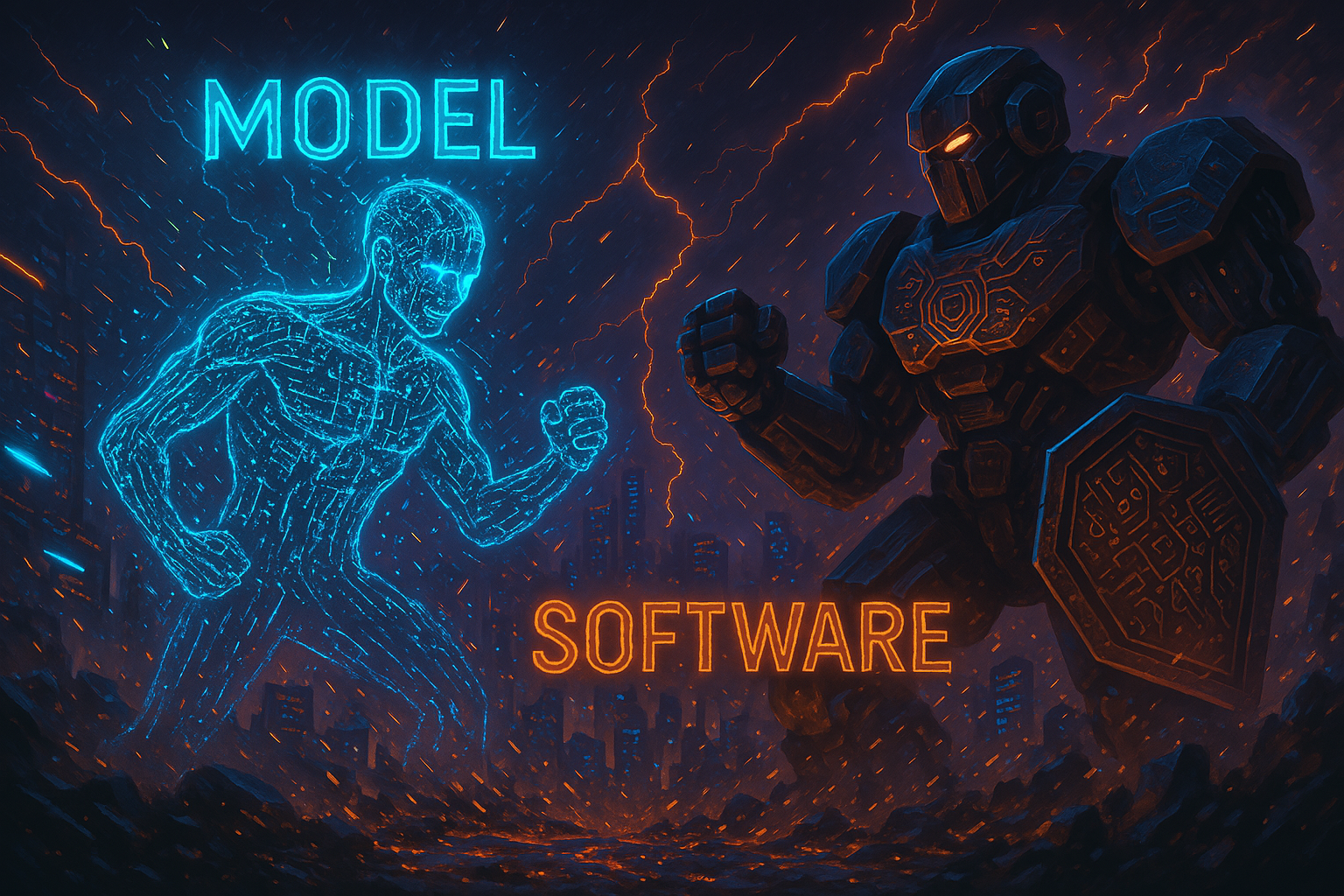The Battle of Models vs. Software: Which One Do You Need?

•January 2, 2025
•5 min read
Models vs. Software: Understanding the Differences and Their Roles in Technology
In the ever-evolving landscape of technology, terms like "models" and "software" often come up in discussions about innovation, development, and application. While these terms are sometimes used interchangeably, they represent distinct concepts that play unique roles in technological ecosystems. This blog aims to demystify the differences between models and software, their interconnections, and how they contribute to technological advancements.
What Are Models?
A model is an abstract representation or a simplified version of a system, process, or phenomenon. Models are typically used to:
Examples of Models:
* Mathematical Models: Represent physical phenomena, like weather patterns or financial markets.
* Machine Learning Models: Neural networks, decision trees, and regression models used for tasks like image recognition and natural language processing.
* Business Models: Frameworks that describe how organizations create, deliver, and capture value.
What Is Software?
Software refers to a collection of programs, instructions, or data that enables hardware to perform specific tasks. It serves as the medium through which users interact with computer systems to achieve desired outcomes. Software can be categorized into different types:
1. System Software: Operating systems like Windows, macOS, and Linux that manage hardware and provide a platform for other software.
2. Application Software: Programs designed for end-users, such as Microsoft Word, Adobe Photoshop, or web browsers.
3. Development Tools: Software used to create other software, such as integrated development environments (IDEs) and compilers.
Key Differences Between Models and Software
How Models and Software Work Together
Models and software are often interdependent, particularly in fields like artificial intelligence, data science, and simulation. For example:
1. AI Applications: Machine learning models are embedded within software applications to provide intelligent features like image recognition, recommendation systems, and chatbots.
2. Simulation Software: Programs like MATLAB or Simulink use mathematical models to simulate real-world systems.
3. Predictive Analytics: Business intelligence tools integrate statistical models to forecast trends and inform decision-making.
Choosing Between Models and Software
When deciding whether to focus on models, software, or both, consider your goals:
If you aim to analyze or predict phenomena, models are essential.
If your goal is to deliver functional tools to users, software is your priority.
For tasks requiring intelligent features, both are crucial. Models provide the logic, while software offers the interface and usability.
Conclusion
Models and software serve as the backbone of technological innovation, each with its distinct purpose and application. While models provide the theoretical foundation and analytical capabilities, software bridges the gap between theory and practice, delivering functional solutions to users. By understanding their differences and synergies, developers, businesses, and technologists can better leverage these tools to drive progress and achieve their objectives.
Whether you're a developer working on the next groundbreaking app or a business leader seeking to harness the power of AI, recognizing the roles of models and software is key to making informed decisions and achieving success in the digital age.
AspectModelsSoftwareDefinitionAbstract representation or frameworkCollection of programs and instructionsPurposeAnalyze, predict, or simulateExecute specific tasksDependencyOften implemented within softwareRequires models for AI/ML applicationsExamplesNeural networks, economic modelsMicrosoft Excel, Python interpreterLifecycleContinuous improvement with dataRegular updates or version releases.
